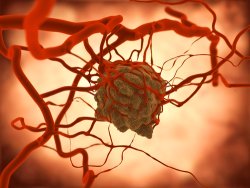Developers
J. Campisi, A. Leonov, P. D. Kaufman, P. Cooper etc.
Description of the technology
Senescent cells are cells which have stopped at various stages of their cell cycle. In due time, those cells had a good chance to become cancer cells. However, the organism has activated a defense reaction and those cells became «arrested» ones. «Arrested» senescent cells are not allowed to divide, however, they remain in the organism and live. In the long run, the amount of such cells rises higher and higher. When the amount of those cells goes overboard, they become the source of inflammation in the organism producing some chemical compounds and causing diseases associated with aging, such as arthritis, type II diabetes, Alzheimer’s disease and cancer. There is a paradox here: senescent cells did not turn into cancer ones, but in the course of time they can provoke cancer being the source of chronical inflammation in different tissues.
Nowadays, scientific researches are led actively which search for specific targets intrinsic to the senescent cells only. If such targets are found, studies will concentrate on the search for chemical compounds which will strike the target pointedly.
Practical application
It was shown that accumulation of the senescent cells in the organism promotes progress of aging process. Therefore, a search for ways of fighting senescent cells is one of the important areas of the modern anti-aging medicine. It is supposed that if we deliver our organism from the «arrested» senescent cells, we will be able to increase our lifespan significantly.
Today this technology is at the preclinical stage.
Laboratories
- ООО «Тартис-Старение» (www.tartiscorp.com, Russian Federation)
- Lawrence Berkeley National Laboratory (USA)
- Buck Institute for Research on Aging (USA)
- Zhang Lab, Department of Cell and Developmental Biology, University of Massachusetts Medical School (USA)
Links
http://business.computerra.ru/business/56352/tabletka-ot-starosti/
https://www.buckinstitute.org/campisiLab
http://www.umassmed.edu/cellbio/labs/zhang/research-stemcell/research-regulation/
Publications
- Swanson, Eric C., et al. «Higher-order unfolding of satellite heterochromatin is a consistent and early event in cell senescence." The Journal of cell biology 203.6 (2013): 929–942.
- Rodier, Francis, et al. «Persistent DNA damage signalling triggers senescence-associated inflammatory cytokine secretion." Nature cell biology 11.8 (2009): 973–979.
- Campeau, Eric, et al. «A versatile viral system for expression and depletion of proteins in mammalian cells." PloS one 4.8 (2009): e6529.
- Zhang, Hong. «Molecular signaling and genetic pathways of senescence: its role in tumorigenesis and aging." Journal of cellular physiology 210.3 (2007): 567–574.
 Данная технология уже используется в некоторых методиках лечения рака. Она позволяет остановить рост целевых клеток или заставить иммунную систему разрушить их. Наиболее перспективный способ выявления аномальных целевых клетки состоит в использовании характерных молекул, которые расположены на поверхности таких клеток. К счастью, разные типы клеток обычно несут на своих поверхностях различные молекулы, что помогает клеткам выполнять специализированную функцию в ткани. Таким образом, определение поверхностных маркеров, которые являются специфичными для аномальных типов клеток, является чрезвычайно важной задачей. В настоящее время уже известны некоторые из таких маркеров для клеток
Данная технология уже используется в некоторых методиках лечения рака. Она позволяет остановить рост целевых клеток или заставить иммунную систему разрушить их. Наиболее перспективный способ выявления аномальных целевых клетки состоит в использовании характерных молекул, которые расположены на поверхности таких клеток. К счастью, разные типы клеток обычно несут на своих поверхностях различные молекулы, что помогает клеткам выполнять специализированную функцию в ткани. Таким образом, определение поверхностных маркеров, которые являются специфичными для аномальных типов клеток, является чрезвычайно важной задачей. В настоящее время уже известны некоторые из таких маркеров для клеток